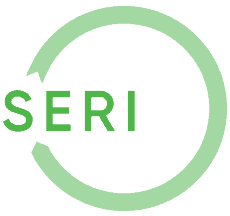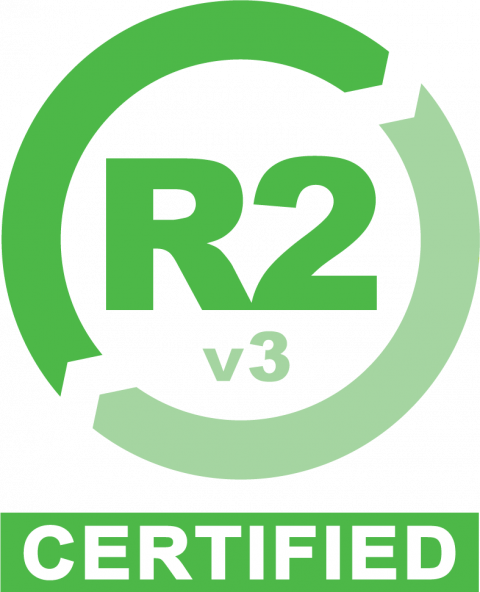Get in touch
USA Office Address
12539 Perry Road Houston, Texas 77070
Canada Office Address - Open To Public Mon-Fri 9am-5pm
6400 Northwest Drive Mississauga, ON L4V 1K1
Refurbishing Electronics for a More Sustainable World
The R2v3 Certification is a recognition from SERI to facilities that demonstrate their mission to protect data, people and the planet, while enriching lives all around the globe.

What Is SERI & Their Mission?
While SERI is best known as the housing body and ANSI-accredited Standards Development Organization for the R2 Standard, their reach continues to grow as they find new opportunities to make a positive impact for everyone, everywhere around the world.
SERI works to create a world where electronic products are reused and recycled in a way that results in resource preservation, the well-being of the environment, and the health and safety of workers and communities.
What Is the R2 Certification?
The R2 Standard provides a common set of criteria to recognize responsible reuse and recycling practices, all along the used portion of the electronics lifecycle. R2 Certification is the formal program for evaluating and monitoring businesses in meeting the R2 Standard, protecting of the environment, the health and safety of workers, and communities, and positively impacting the movement toward a sustainable circular economy while, enriching the lives of people all around the world.

R2 IS SETTING THE STANDARD FOR USED ELECTRONICS, EVERY STEP OF THE WAY
We're Working Toward Zero E-Waste & True Electronics Sustainability
The electronics industry is constantly changing and to keep pace, SERI's best practices and standards need to evolve as well. The R2v3 certification incorporates the experience gained from more than a decade of auditing and implementing the R2 Standard and reflects changes in the electronics landscape, customer demands, and the regulatory environment.
Increased Emphasis on Reuse and Protecting Data
With strengthened data security controls and enhanced controls for test, repair, and reuse operations to ensure the quality and effectiveness of the operations.
Strengthened Requirements in Key Areas
Based on experience and lessons learned, especially in the areas of data protection, managing the flow of material through downstream vendors, and environmental health and safety requirements. These changes are intended to reduce risk and negative outcomes while still allowing for innovation in process and methods to achieve consistent results.
Clarified Requirements and Expectations
Recognizing there can be multiple, equally effective ways to achieve the same result, R2v3 continues to be focused on outcomes.
However, R2v3 does add prescription in some areas to improve understanding and consistency of the expected outcomes.
Choosing an R2 Certified partner doesn’t just make you environmentally responsible. It also makes you business-responsible.
Aligning with R2 Certified partners doesn’t only help protect the environment. It also helps protect your business and your customers from data, health, safety and environmental risks. And using R2 Certified facilities demonstrates a social commitment to customers, employees and shareholders.
R2v3 Specialty Core & Process Requirements
As the world's most widely adopted standard for responsible practices for used electronics, our R2v3 certification is constantly being upheld by SERI's “Core” and specialized “Process” requirements.
CNB Computers is certified in the below processes:
Scroll to read all tabs →
Appendix A
The capabilities of each R2 Certified facility will vary based on their specialty and where they are positioned in the recycling chain. Unless the facility is at the end of the recycling chain, such as a circuit board smelter, each R2 Facility will have a network of partners that specialize in processing or managing certain equipment and materials.
With the wide variety of types of equipment, age, condition, value, etc. the full management of all your various electronic devices requires a network of specialized vendors. We call this the “Downstream Recycling Chain.” Each facility in that recycling chain is called a “downstream vendor” (DSV). Appendix A includes requirements for verifying the downstream vendors in the recycling chain.
No matter the specialization of an R2 Facility as designated on their R2 Certificate, customers can be assured that all of their equipment will be responsibly processed through this pre-qualified and audited chain of DSVs. Each R2 Facility that manages a downstream recycling chain will be certified to Appendix A.
Appendix B
Appendix B Logical Sanitization sets forth requirements to ensure that data is not recoverable by commercial software. This is important in reuse of electronics, because we need to be assured that any residual user data has been properly sanitized to prevent others from accessing it. Sometimes customers require physical destruction of the device or data component because they worry that logical sanitization won’t be effective. While this is understandable, the unintended consequence is that destruction sacrifices the opportunity for good that comes when someone else can reuse your electronics. Appendix B provides a rigorous standard for performing sanitization and verifying that it is done right. It requires records created by data wiping software for proof of sanitization for each device. It no longer allows manual processing that is prone to human errors or falsification of records. Furthermore, Appendix B requires that cloud connections such as “Find my iPhone” are removed in the process so data cannot be repopulated later. Most importantly, Appendix B establishes enhanced controls to verify sanitization and validate the entire process.
Appendix B Specialization is recommended for ITAD, Returns, and Trade-Ins. It is not usually necessary for dedicated end-of-life or bulk consumer recycling programs.
Appendix C
Creates the opportunity to extend the useful life of electronics. Giving reusable electronics a second life provides opportunities for digital equity for lower income households and developing economies. Second-life devices provide working electronics at affordable prices.
The key is “working” because this is the difference between a used electronic device and e-waste. Appendix C sets forth the requirements to differentiate those facilities specializing in testing, repairing, and refurbishing electronics for reuse. Appendix C goes further than visually grading a device for physical defects or simply powering it on. R2 Facilities certified to Appendix C are testing all the key functions of the electronics to verify that they are actually working. With this knowledge and test results in-hand, electronics can move freely around the world as used electronics (UEEE), not as e-waste (WEEE).
R2 Facilities certified to Appendix C must also be certified to a Quality Management System like RIOS or ISO 9001. They must implement product safety verification to ensure the electronics are safe for reuse. And most importantly in today’s world, they must ensure that the residual user data on any used electronic is permanently destroyed in accordance with the stringent requirements of Appendix B for logical data sanitization.
Facilities certified to Appendix C produce functional electronics that are capable of reuse anywhere in the World.
Recommended for ITAD, Returns, Trade-Ins. This specialty is usually not necessary for recycling bulk consumer streams that are often end-of-life and where electronics that can be reused are sent to a downstream vendor qualified to Appendix C.
SERI & R2 Certification
Most Commonly Asked Questions & Answers
-
What is R2's origin?
Recognizing the need in 2005 for comprehensive best practices that addressed the operational and environmental challenges in electronics recycling and repair, the US Environmental Protection Agency convened a multi-stakeholder process to create a voluntary, market-based mechanism for promoting best practices in electronics recycling. What emerged from that process was the “Responsible Recycling practices for Use in Accredited Certifications Programs” (R2) Standard, the precursor for SERI’s more recent versions of the R2 Standards.
-
Who is behind R2v3?
SERI, a US based 501c3 non-profit organization is the housing body and ANSI-accredited Standards Development Organization for the R2 Standard. The R2 Consensus Body is the balanced multi-stakeholder group that includes: entities covered by the standard, customers of these entities, regulatory agencies/public interest groups, and others involved in implementation of the certification program. This all volunteer stakeholder group with the assistance of the broader R2 Technical Advisory Committee (TAC) have developed R2v3.
-
What was the process for developing R2v3?
Evolving from R2:2013 to R2v3 has been a nearly 5 year-long collaborative process between the TAC, Consensus Body, the electronics industry, SERI’s board, and the general public. The established process for revisiting and updating the R2 Standard is as follows:
- The TAC discusses, identifies, and proposes revisions to the R2 standard based on changes in the marketplace, learning over time, and industry feedback.
- The Consensus Body, in conjunction with the TAC, aggregates and organizes those proposed revisions into a new version of the Standard.
- The Consensus Body then distributes those proposals for public comment.
- After the public comment period has ended, the TAC and Consensus Body responds to comments, and amends the proposed revisions. If changes are made, the public comment process is repeated. In the case of R2v3, two rounds of public comment and revision were conducted.
- When all public comments have concluded, the Consensus Body votes to approve the final draft standard submit the proposed version to the SERI Board for adoption.
If the proposed version is adopted by the SERI Board, it is submitted to ANSI for approval as an American National Standard.
-
When does R2v3 go into effect?
R2v3 will be ready for certification in late 2020. Facilities will transition to the new version as their R2:2013 Certificates expire over a 3 year period.
-
What about R2:2013?
R2:2013 will continue to be valid through the transition period until it finally sunsets on July 1, 2023.
-
What is the code of practices?
The Code of Practices (COP) contains the requirements of certifying facilities that meet the requirements of the R2 Standard. The COP applies to the Certification Bodies who audit and grant R2 certifications, but can affect how facilities are certified. Version 2.0 is specific to R2v3 and can also be referred to as the R2v3 Certification Program.
Contact our expert sales team to learn how CNB Computers can help your industry.
Company
Solutions
Industries
Locations
Canadian Office Address
6400 Northwest Drive Mississauga, ON L4V 1K1
Open to the public Mon-Fri 9am-5pm
USA Warehouse Address
50 French Road Cheektowaga, NY 14277
USA Office Address
12539 Perry Road Houston, Texas 77070
